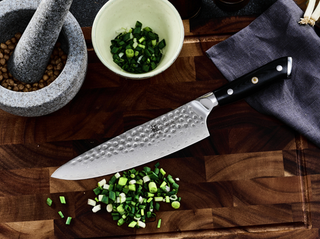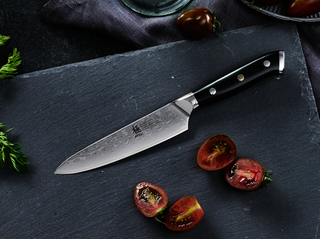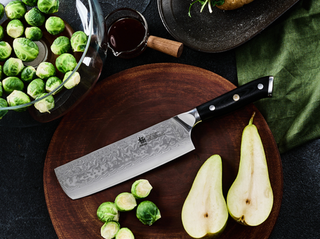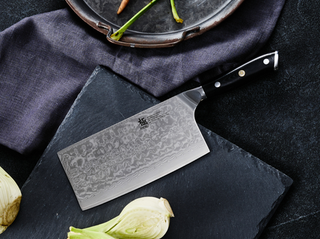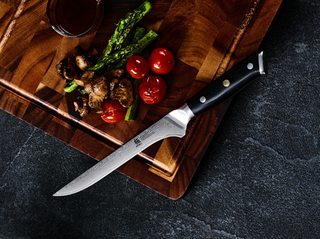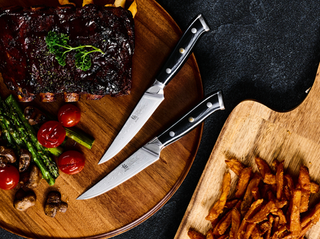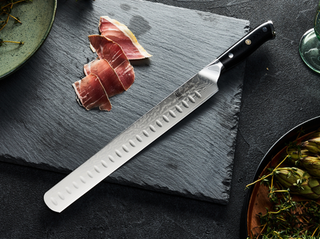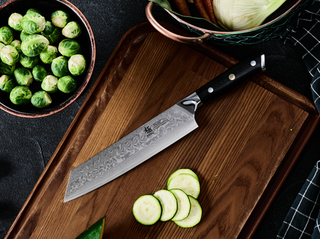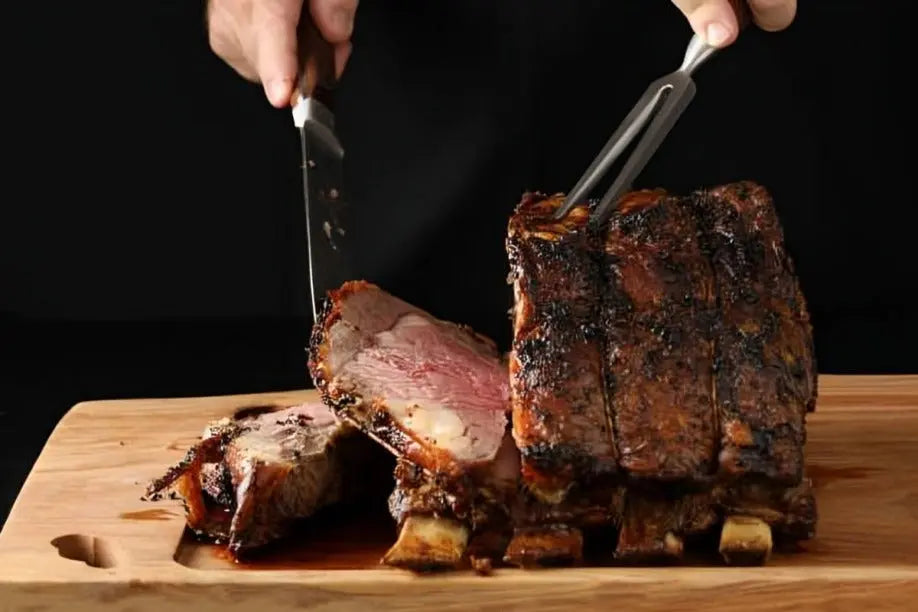Few dishes say “holiday feast” quite like a perfectly cooked prime rib. Whether it’s Christmas, New Year’s, or another festive occasion, slicing a juicy, tender roast into individual steaks is always the right way to wow your family and friends at the dinner table.
The good news is, once you’ve got the hang of it, turning a festive roast with bones sticking out one end into a row of perfectly portioned steaks can take less than five minutes.
Main points
To successfully carve prime rib into steaks, there are three things you must master:
- How to separate the back ribs from the ribeye roast.
- The right size/thickness to cut the steaks into.
- When to switch from one kind of knife to another.

How to Carve Prime Rib Into Steaks
The process of carving prime rib into steaks involves two main steps that must be handled carefully:
- Separating the back rib from the ribeye roast,
- Cutting the ribeye roast into properly sized steaks.
But before that, you must ensure that you let the roast rest for some time after it comes out of the oven, and that your knife is up to the task.
Step #1: Let the Roast Rest
The first and most important step is to let your prime rib rest for about 15 minutes after taking it out of the oven.
The purpose of letting it rest is to allow the juices to redistribute evenly, which in turn will give you steaks that are moist, tender, and full of flavor.
During cooking, the juices move toward the surface. Carving immediately would be a huge mistake: all that liquid will spill out, leaving you with meat that is dry and not as flavorful as you’d want.
So, cover the roast loosely with foil and let it sit while you prepare your carving area.
Step #2: Separate the Back Ribs
Next, it’s time to remove the back ribs. For context, the back ribs are the curved bones along the underside of the roast.
Now, follow these steps to separate the back ribs from the rest of your ribeye roast:
- Stand the roast upright on the cutting board with the bones vertical.
- Locate the line where the back ribs meet the ribeye roast.
- Then insert your knife and cut through. As you cut, keep very close to the bones in the back rib as you cut lower and lower.
- About three-quarters of the way down, you will come to a point where it becomes a little more difficult to cut. This is typically the point where the bones curve outwards, away from the rest of the meat. Angle your knife slightly toward the roast and continue cutting until the entire rib section separates.
Once the rib bone falls free, you have a clean ribeye roast, ready to be carved into individual steaks.
What Do You Do With the Back Rib?
While they have less meat than the ribeye, the little meat that is there is extremely flavorful. So the smart thing to do is take them out, to later roast or grill as a bonus treat.
What Knife to Use?
For this step, you’ll want a boning knife, specifically a 6-inch boning knife. Boning knives are narrow and flexible, and a 6-inch boning knife has a long enough blade for you to follow the curve of the bones and make precise cuts without wasting meat.

Step 3: Cut the Ribeye Into Steaks
The most difficult thing about carving ribeye into steaks is not the process of carving into individual steaks, but deciding what size or thickness the steak should be.
Here, you can either go with the traditional classic prime rib thickness or customize your own thickness based on your individual preferences
- The traditional size/ thickness for prime rib is ½-inch slices per steak
- However, for a festive meal, you might want to go thicker (¾ inch or even 1 inch) for a hearty, impressive presentation
- Also, you can carve your prime rib into different sizes depending on the size of your rib, the number of steaks you need, or even the preferences of the people who will be sharing the meal.
- Thicker slices are also ideal if you plan to sear the steaks in a pan or finish them on the grill.
How to Cut the Ribeye
Once you have decided on what size your steaks are going to be, switch from a boning knife to a carving knife. Its long, smooth blade allows you to make clean, even slices without tearing the meat.
- Lay the ribeye roast flat on the cutting board.
- For each steak, start by estimating the right size/thickness, then carefully insert your carving knife through the top and cut carefully down to the bottom.
- Slice all the way down in a single, smooth motion.
- Continue until you have a row of uniform, festive steaks ready to serve.
If your roast is well-rested and cooked to your liking, the knife should glide through effortlessly, especially after the back ribs have been taken out.

FAQS About Cutting Prime Rib Into Steaks
Why Switch From a Boning Knife to a Carving Knife?
When cutting prime rib into steaks, you switch knives from a boning knife (when separating the back rib from the ribeye) to a carving knife (when cutting the ribeye) because each one is designed for a different job:
- Boning knife: Its thin, flexible, and narrow blade lets you work tightly along the rib bones, making it easier to separate the back rib from the ribeye cleanly without wasting meat.
- Carving knife: Once the bones are off, this longer, straighter blade gives you smooth, even slices when cutting the ribeye into steaks. It helps maintain uniform thickness and cleaner cuts.
In short, a boning knife for precision around bones; a carving knife for clean, consistent steak slices.
What Other Knives Can You Use?
For removing bones, you can consider a utility knife (6"–7"): If it’s stiff and sharp, it can handle bone separation fairly well.
For cutting the ribeye into steaks, consider the following knives, even if you don't have a carving knife:
- Chef’s knife (8"–10") with a good handle and enough blade length for even steaks.
- Slicing knife with a long blade: ideal for smooth, even cuts through large boneless sections.
- For larger prime rib pieces, you can go for a butcher knife with a curved, heavy-duty blade for cutting through thicker muscle.
Final Thoughts
Carving prime rib for a festive occasion doesn’t have to be intimidating. With a little patience, the right knives, and careful attention to thickness, you can transform a beautiful roast into restaurant-quality steaks at home.
Your guests will be impressed not just by the flavor, but by the elegant presentation, a true centerpiece for your holiday feast.
Serve with your favorite sides, pour a glass of wine, and enjoy the applause: it’s a holiday tradition everyone will remember.
You might be interested in another instructive guide on how to cut skirt steak.
